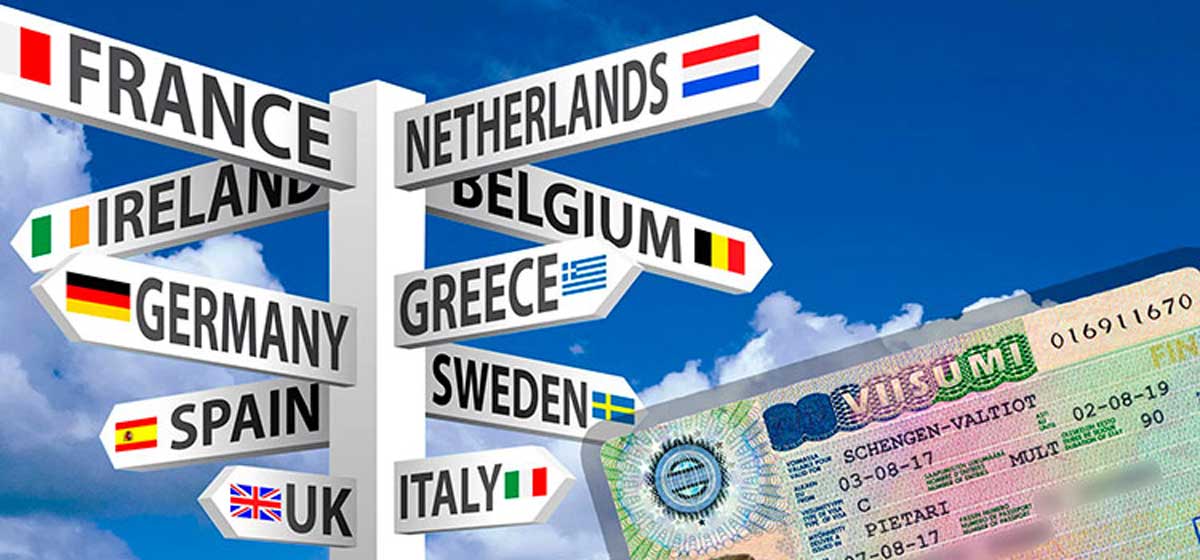The European Commission has approved the introduction of a new procedure for entering the Schengen zone for citizens of third countries. Find out what and for whom will change when crossing the border of the Schengen zone, as well as when the new rules will come into force.
Schengen entry rules are changing
Soon, citizens of third countries who have the right to enter Schengen countries without a visa or will enter based on a short-term visa will not have a border crossing stamp on their passports. This was reported by the international portal dedicated to visa issues, schengenvisainfo.com. As noted on the website, shortly it is planned to introduce a new automated system that will electronically record and enter information on the entry and exit of foreigners into the database.
The automated control system for crossing the border of the Schengen zone by citizens from third countries was named the Entry/Exit System (EES). It is planned to be launched at full capacity by the end of 2023.
What tasks will the automated entry control system in the Schengen EES solve?
The main task of the automated Entry/Exit System will be to track the time spent on the territory of the Schengen zone countries by citizens from third countries and record possible violations of the period of stay of travelers. That is, to track and identify persons who have exceeded the permitted period of stay in the Schengen zone.
Justifying the importance and significance of the introduction of the new automated Schengen border crossing control system, the European Commission for Migration and Home Affairs explains in its statement that:
The EES will replace the current system of manual stamping of passports, which is time-consuming, does not provide reliable data on border crossings, and does not allow systematic detection of overstayers.
According to the plan, the automation of border crossing processes by citizens of third countries’ Entry/Exit System should not only facilitate the monitoring of their stay on the territory of Schengen but also modernize and speed up the direct technical procedures of border verification of documents. And this, in turn, should allow travelers from third countries to cross the border of the Schengen zone faster.
How will the automated control system for crossing the border of the Schengen area work?
Currently, it is known that the Entry/Exit System automated control system for crossing the border of the Schengen zone by citizens from third countries will register all the necessary personal data of travelers, including:
- name and surname of the person entering the Schengen area;
- the type of travel document based on which the entry is carried out;
- the image of the traveler’s face and fingerprints;
- date and place of entry and exit;
- the period of stay of a citizen from a third country in the Schengen area.
It is worth noting that immediately after the launch of the automated Entry/Exit System, travelers who have the right to enter Schengen countries without a visa will be required to obtain an entry permit before their trip. This authorization will be issued online through the European Travel Information and Authorization System (ETIAS) platform.
What is ETIAS?
Work on the implementation of the European Travel Information and Authorization System began back in 2016. The European Travel Information and Authorization System should become a kind of analog of the US Electronic Entry Authorization System (ESTA). Under ETIAS, each applicant will undergo a security check, during which it will be determined whether a particular traveler is allowed to enter Schengen countries.
The fact is that people who plan to travel from countries whose citizens have the right to stay in the EU for up to 90 days without a tourist visa are thus freed from the need to go through the lengthy process of applying for a visa and the relevant checks. But the ETIAS system will make it possible to quickly and remotely carry out a security check of a specific traveler who must enter without a visa and make sure that this person does not pose a threat to the security of any of the Schengen countries. So this entry authorization system will collect, track and update the necessary information about those who arrive, allowing the traveler to determine before each trip whether his entry into the Schengen countries will be a danger zone.
The cost of ETIAS services will reportedly be 7 euros per person. At the same time, the permit initially obtained through the European Travel Information and Authorization System will remain valid for three years. According to estimates, there are currently around 1.4 billion people in the modern world who can legally enter the Schengen area without visas. So all of them, planning a trip to the Schengen countries, should apply for an ETIAS permit.
Planned changes to the visa application process
The introduction of the Entry/Exit System and ETIAS is not the only change that awaits citizens from third countries who plan to travel to Europe shortly. Recently, the government of the European Union also announced its plans to change, namely to simplify and modernize the procedure for submitting visa applications.
And the first steps in this direction have already been taken. Thus, the European Parliament recently approved a report on the transfer of the procedure for submitting applications for Schengen visas to a completely online mode. Therefore, we should expect modernization of the Schengen visa application process soon. After all, the final result of the approved report should be a complete rejection of the physical submission of applications and visa stickers in favor of transferring the procedure completely to a digital format.
As noted in the European Parliament, visa applications will be processed on a single platform once the corresponding action algorithm is approved. At the same time, applicants will be able to find out which country accepts their application.

